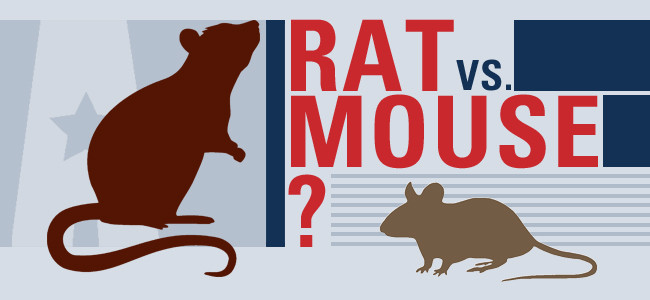Have you seen the well-known cartoon Ratatouille? Although a young, ambitious and talented rat became a good cook and prepared breathtaking dishes, the restaurant was closed due to the presence of a rodent.
Rats and mice cannot be the most comfortable tenants in your home. Not only do they crawl into your walls and eat your food, they can also transmit many diseases to you. Some of them lead to death.
The experts from 369bugs website In order to drive mice and rats out of your home, you need to know what type of rodent you are dealing with. Sometimes the help of pest control experts is essential.
This article provides more information on different types of rodents that can be useful in your fight with them.
The house mouse
This is the most common rodent you might encounter if you infect your home. This type of pest has been found on all continents except Antarctica. The house mouse population is increasing very quickly. The gestation period is only about 20 days. A female mouse becomes pregnant up to 10 times a year. So if you only have a few innocent mice in the house, you should be ready to have the whole colony of them very soon.
House mice are very small. They have a pointed nose, big ears and short hair. Her feet are wide and hairless. The tail is very scaly.
They are most likely in the dark and difficult to access in places where they feel safer. Places like loft or basement are just perfect for them. They build nests out of paper or other soft materials that can be found in your home. Finding pieces of different soft materials anywhere could be a sign of the presence of a mouse in your home.
Most of them adhere very close to the wall and leave dirt stains. Therefore, this is the second thing that could tell you that mice live in your house.
This type of rodent leaves a lot of feces. They are small, about 3-6 mm long and rod-shaped. They are rather behind different places such as stoves, refrigerators or furniture. However, never clean it with your bare hands, as rodent droppings can transmit various diseases to humans.
Norway rat
When we think of rats, we usually think of the image of a Norwegian rat. Remy, the protagonist of the Ratatouille film, probably belonged to this kind. But the real Norwegian rats aren’t as cute as those from an animated film.
You are not from Norway. But this is the country where they were first identified by humans. This type of rodent is quite large; They are either gray or brown with two-tone tails. The ears and eyes are very small.
Their teeth are very large and they never stop growing. Therefore, Norwegian rats always have to chew on things to prevent them from getting too big. This is terrible news for those who live in their homes. The sides of the houses, furniture, stone, soft concrete, even metals can be damaged.
Norway rats love the food you eat. Don’t try to hide it from them. You can chew what they want and find the way to what you tried to hide.
Although rats move very quickly and prefer to hide sooner or later, you will likely see them. It is impossible not to notice such large rodents. Make sure that the rat does not attack you and that you are not bitten.
The feces of the Norwegian rats are very large and almost 2 cm in size. You will find them everywhere in literature, but most likely in the kitchen, in cupboards or behind furniture.
Make sure to discard rats as soon as you reveal their presence in the house. You could be very dangerous.
Roof rats
If you hear noise from the roof of your house at night, do not call ghost hunters. Most likely, rodent control is what you need. Roof rats are very common rodents that live in the upper part of human houses.
As already known from the name, this type of rat likes to climb. You can climb trees, wires and pipes. Entering the attic is a great fortune for roof rats. This is the safest place to stay warm and reproduce.
They are usually colored black or brown, the stomachs are white. They aren’t picky about food, but fruit and cereal are their favorite dishes. They tend to consume large amounts of food and keep it for a while. They will always return to the place where they last ate.
Their feces are quite large, about 12.5 mm long and are in the usual hiding places of rodents: behind devices, furniture, walls.
The last thing
If you can determine what type of rodent you are dealing with, you may be able to dispose of it as soon as possible. Think about that hazards that mice and rats can support the health of your family and you. Don’t be ignorant of rodents entering your home and try to take action as soon as possible.
 TopsDecor.com Home Decor Ideas
TopsDecor.com Home Decor Ideas






